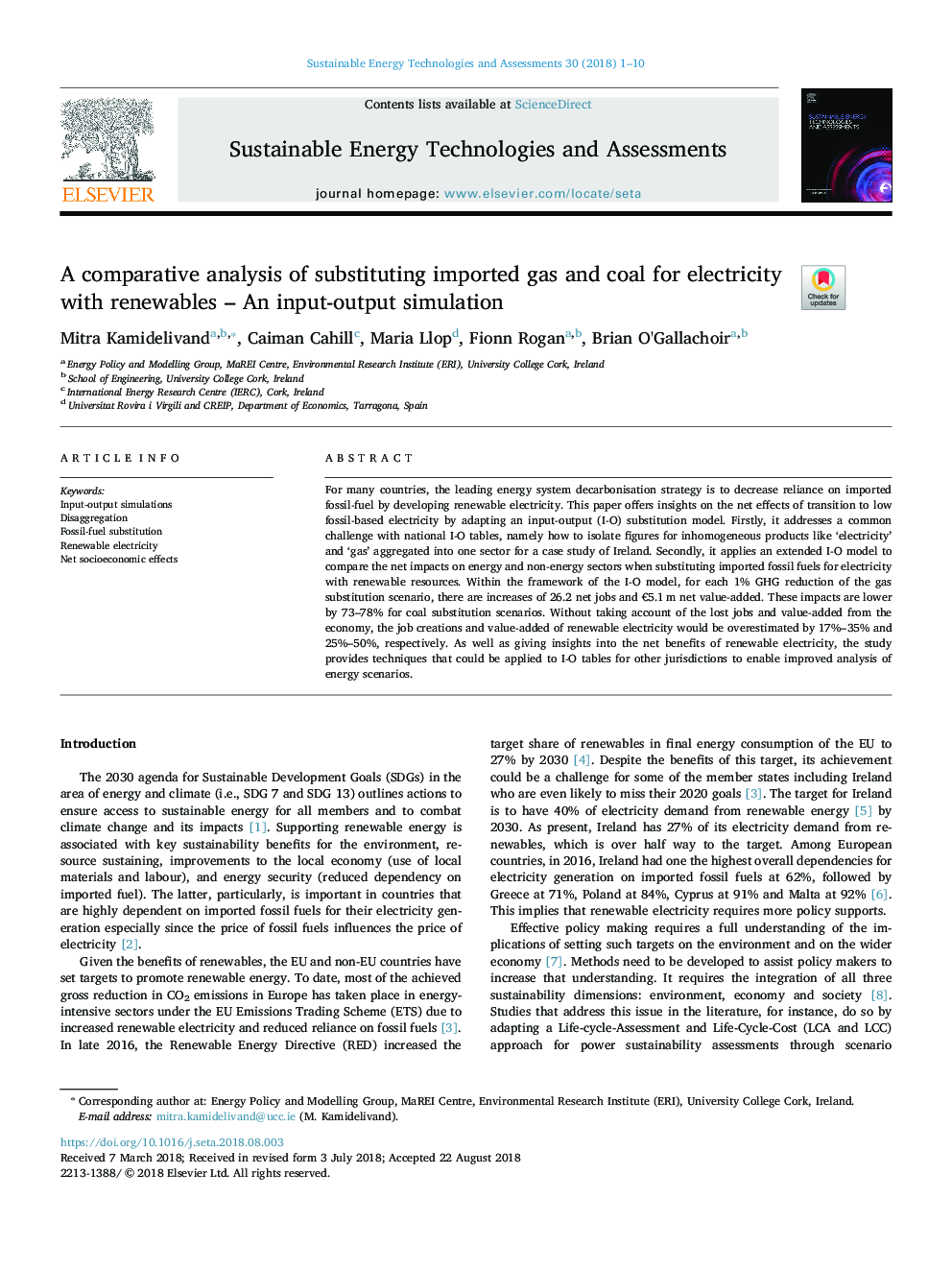| Article ID | Journal | Published Year | Pages | File Type |
|---|---|---|---|---|
| 10147933 | Sustainable Energy Technologies and Assessments | 2018 | 10 Pages |
Abstract
For many countries, the leading energy system decarbonisation strategy is to decrease reliance on imported fossil-fuel by developing renewable electricity. This paper offers insights on the net effects of transition to low fossil-based electricity by adapting an input-output (I-O) substitution model. Firstly, it addresses a common challenge with national I-O tables, namely how to isolate figures for inhomogeneous products like 'electricity' and 'gas' aggregated into one sector for a case study of Ireland. Secondly, it applies an extended I-O model to compare the net impacts on energy and non-energy sectors when substituting imported fossil fuels for electricity with renewable resources. Within the framework of the I-O model, for each 1% GHG reduction of the gas substitution scenario, there are increases of 26.2 net jobs and â¬5.1â¯m net value-added. These impacts are lower by 73-78% for coal substitution scenarios. Without taking account of the lost jobs and value-added from the economy, the job creations and value-added of renewable electricity would be overestimated by 17%-35% and 25%-50%, respectively. As well as giving insights into the net benefits of renewable electricity, the study provides techniques that could be applied to I-O tables for other jurisdictions to enable improved analysis of energy scenarios.
Keywords
Related Topics
Physical Sciences and Engineering
Energy
Energy Engineering and Power Technology
Authors
Mitra Kamidelivand, Caiman Cahill, Maria Llop, Fionn Rogan, Brian O'Gallachoir,
